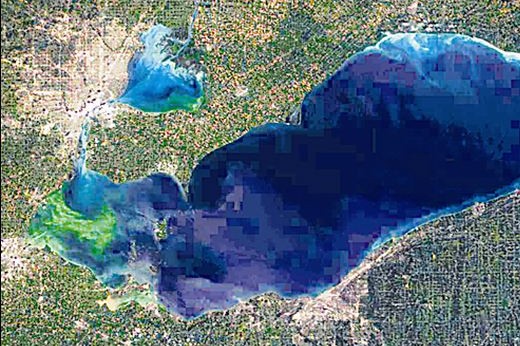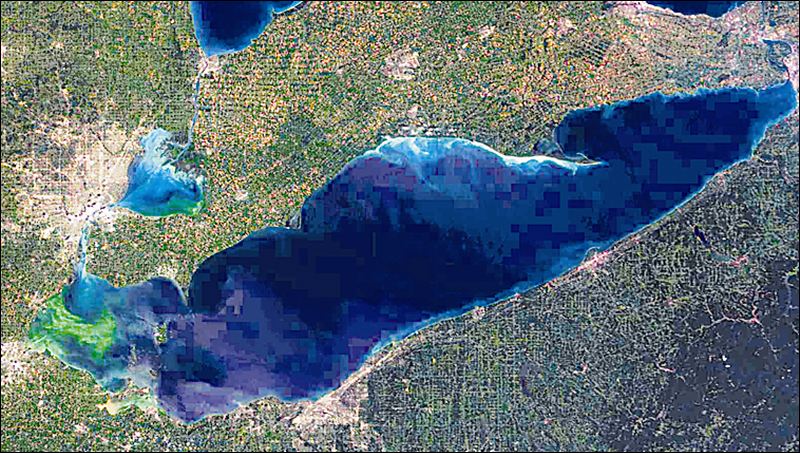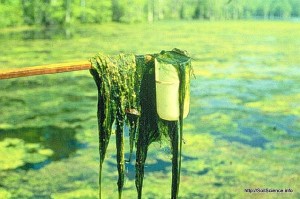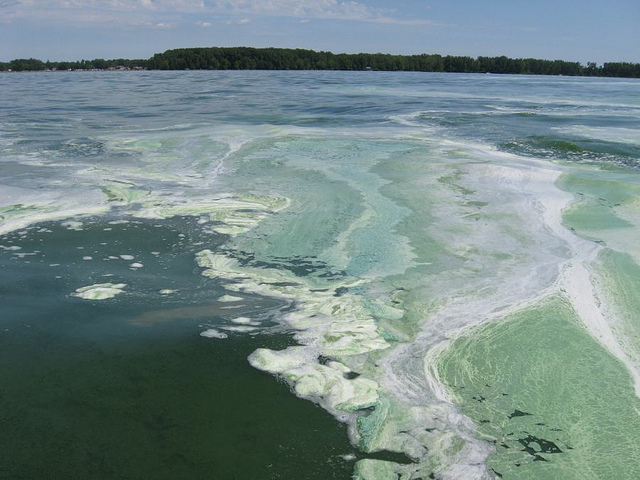Podcast: Play in new window | Download
Subscribe: RSS

Algae blooms on Lake Erie, virtually covering its Eastern bay in this August photo from space, are killing the lake. Again. And we know who the killer is.
Declared dead in the 1970s, brought back to life by the environmental movement it did much to inspire, Lake Erie is once again expiring, killed by industrial agriculture. Specifically, phosphorous from synthetic fertilizers, which the aforementioned environmental movement never gained the clout to regulate. After having been reduced by two-thirds with various buffering and conservation practices, phosphorous levels in Lake Erie are, according to an Ohio State University expert, “back up to when it was considered a dead lake.” Continue reading


